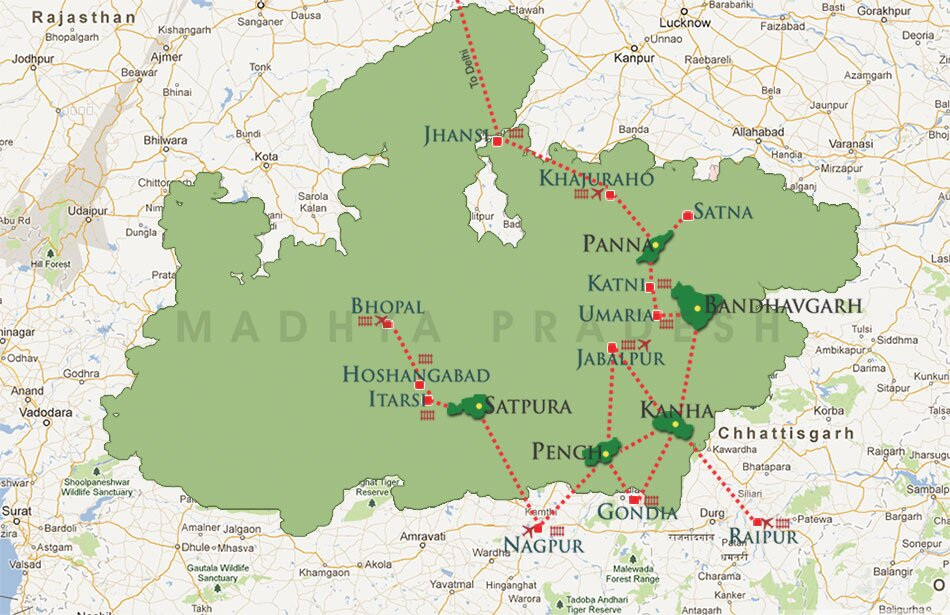ASI finds Buddhist Caves in Bandhavgarh Forests | 29 Sep 2022
Why in News?
The Archaeological Survey of India (ASI) discovered Buddhist caves and stupas at Bandhavgarh Tiger Reserve in Madhya Pradesh.
What are the Findings?
- Buddhist Caves:
- 26 Buddhist Caves were discovered dating back to the 2nd and 5th centuries, pertaining to the Mahayana sect of Buddhism.
- The caves and some of their remains had ‘Chaitya’ (rounded) doors and stone beds typical of Mahayana Buddhism sites.
- Inscriptions in Brahmi text:
- 24 inscriptions in Brahmi text were, all dating back to the 2nd-5th centuries.
- The inscriptions mention sites such as Mathura and Kaushambi, and Pavata, Vejabharada and Sapatanaairikaa.
- The kings they mention include Bhimsena, Pothasiri and Bhattadeva.
- Remains of Temples:
- The remains of 26 temples dating to the Kalachuri period between 9th-11th centuries and the possibly world’s largest Varaha sculpture also dating to the same period were found.
- The Kalachuri dynasty, which spread over parts of Gujarat, Maharashtra and Madhya Pradesh, is also associated with the earliest Ellora and Elephanta cave monuments.
- The Varaha sculpture is among the many monolithic sculptures of the 10 incarnations of Lord Vishnu.
- Two Saiva mutts have also been found.
- The remains of 26 temples dating to the Kalachuri period between 9th-11th centuries and the possibly world’s largest Varaha sculpture also dating to the same period were found.
- Remains of the Gupta Period:
- Some remains of the Gupta period, such as door jambs and carvings in caves, have been found.
What are the Key Points of Bandhavgarh Tiger Reserve?
- About:
- In 1968, it was notified as a national park and in 1993 was declared a tiger reserve- under the Project Tiger Network at the neighbouring Panpatha Sanctuary.
- Historical Significance: Its mention can be found in the ancient books of the ‘Narad Pancharatra’ and the ‘Shiv Purana’ that this place is being associated with Ramayana.
- The Bandhavgarh Fort is a great masterpiece of “Treta Yuga” (one of the ages of mankind in Hinduism).
- It was ruled by major dynasties including Sengars, the Kalchuris, and the Baghels (believed to rule the regions for the longer period).
- Geographical Aspect: It resides on the extreme north eastern border of Madhya Pradesh and the northern edges of the Satpura mountain ranges.
- Climate: Tropical monsoon climatic zone.
- Streams: The whole park is filled with more than 20 streams out of which some of the most important streams are Johilla, Janadh, Charanganga, Damnar, Banbei, Ambanala and Andhiyari Jhiria. These streams then merge into the Son river (an important southern tributary to the river Ganga).
- Biodiversity: There is a large number of tigers in the core zone. There are more than 22 species of mammals and 250 species of birds.
- Species Found: Asiatic Jackal, Bengal Fox, Sloth Bear, Striped Hyena, Leopard and Tiger, Wild Pigs, Nilgai, Chinkara and Gaur (a herbivore and the only coarse feeder).
What is the Archaeological Survey of India?
- ASI, under the Ministry of Culture, is the premier organization for the archaeological research and protection of the cultural heritage of the nation.
- It administers more than 3650 ancient monuments, archaeological sites and remains of national importance.
- Its activities include carrying out surveys of antiquarian remains, exploration and excavation of archaeological sites, conservation and maintenance of protected monuments etc.
- It was founded in 1861 by Alexander Cunningham- the first Director-General of ASI. Alexander Cunningham is also known as the “Father of Indian Archaeology”.

